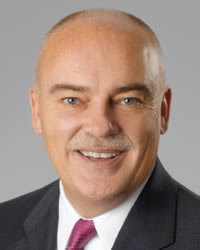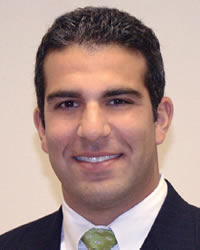Problem Solvers
Best Practices for Portable Oxygen
As portable oxygen use grows, providers are developing best practices that are helping patients master their devices and achieve maximum benefit.
- By Joseph Duffy
- Nov 01, 2012
Usage of portable oxygen devices has been almost revolutionary when it comes to patients’ therapy and ability to enjoy their lives, as well as how respiratory equipment providers run their businesses and care for their patients. And, as portable oxygen devices proliferate, providers are beginning to develop some best practices that can be applied to both their businesses and their patients.
For starters, although there is very little scientific data on oxygen and activity, what does exist seems to support the opinion that when routinely used, portable oxygen provides very favorable outcomes benefits to COPD patients, says Bob Messenger BS, RRT, Manager of Respiratory Clinical Education for Invacare Corp.
“A re-analysis of the NOTT [Nocturnal Oxygen Therapy Trial] study revealed that oxygen plus activity allowed patients to live longer and resulted in fewer days in the hospital per year,” he says. “Essentially meaning that oxygen improves both the quantity and quality of life, if you assume that the fewer days spent in the hospital equate to a better quality of life.
“Also, the idea that oxygen combined with activity reduces hospitalization is particularly interesting to hospitals, since they are now looking for ways to reduce COPD readmissions and avoid financial penalties,” he adds.
And portable oxygen devices not only good patient outcomes, but good business outcomes. Portable oxygen has grown significantly over the last few years as providers are doing more cost accounting in an attempt to remain profitable with the reimbursement cuts that come with competitive bidding, says Dikran Tourian, CEO, O2 Concepts. Providers are embracing the non-delivery model and see the value in spending more upfront to remain profitable in the long run.
Key to portable oxygen business success is making sure that patients are getting the best treatment possible. Both experts weighed in with some key steps that providers should take to achieve favorable outcomes.
 Tips from Bob Messenger:
Tips from Bob Messenger:
- Match the portable system to the patient. By understanding the lifestyle that each patient enjoyed prior to needing oxygen, providers are better able to offer a system that will support, rather than hinder, a closer return to that lifestyle. For instance, patients who enjoyed vacationing and travel would benefit from a POC or transportable concentrator. Active, non-working patients who stayed closer to home might better benefit from a more durable transfill-based system.
- Titrate the oxygen conserving device (OCD) setting. This is probably the single most important measure providers can take to ensure that their patients receive the benefits of ambulatory oxygen. Providers who choose not to titrate should limit their ambulatory oxygen systems to those who only provide continuous flow.
- Train and educate the patient. These may sound like the same thing, but they are vastly different. Patients need to be trained on how to properly use, clean and care for their oxygen equipment. They also need to be educated on why they need oxygen, what the benefits of oxygen and ambulation are and what breathing techniques they can use to help when they encounter challenges such as stairs and hills. The benefits of educating COPD patients on their disease and how to manage it have been documented in a large number of clinical studies. Improved compliance and reduced frequency and duration of hospitalization are just some of the benefits.
- Encourage the patient to purchase a finger pulse oximeter. A pulse oximeter lets patients participate in the management of their disease by allowing them to better understand both their limits and their capabilities. Patients taught to adjust their OCD setting based on oxygen saturation readings are less likely to experience poor outcomes. Also, the confidence that comes from being a part of their disease management may promote even greater levels of activity.
- Teach patients to troubleshoot the portable oxygen device. Patients need to understand how their portable oxygen system should normally operate and what to do in the event that it is not working properly. They also need to be aware of what actions they should take if they feel shortness of breath, even when the system is working properly. In other words, they need to know when they should contact their provider and when they should contact their physician.
- Test the unit before placing it on a patient. Oxygen is a drug and needs to be taken seriously. All oxygen systems, including POCs, should be tested to ensure proper performance before they are placed on or shipped to a patient.
- Teach proper battery management. Patients should be taught how to switch out batteries and to use AC power and external 12-volt power (car ancillary power source) whenever it is available.
 Tips From Dikran Tourian:
Tips From Dikran Tourian:
- Establish a formulary or “menu” of products that offered oxygen patients. Some questions to consider:
- Does the patient plan on any overnight travel? If so, they would need a POC that offers both continuous and pulse dose.
- Does the patient travel more than 25 miles away from their home? If so, they would most likely need a POC that offers both continuous and pulse dose.
- Does the patient ambulate at all? Most providers would most likely provide traditional delivery model products in this example.
- Providers need to identify what matters most to patients in their region. POCs that provide continuous and pulse have the advantage of being an all-in-one solution, meaning there is only one piece of equipment to maintain and train staff on. Transfill systems give patients a much smaller product to carry, but they add around $30.00 a month to the patient’s electricity bill.
“The real challenge is in convincing the patient both of the need for activity and of the benefits of using oxygen while outside of the home,” Messenger says. “Patients need to be informed not just about how oxygen equipment works, but also why it’s important for them to regularly ambulate, or otherwise be active.
“Part of promoting that activity is dependent on ensuring that the patient has a sufficient supply of portable oxygen so they don’t feel the need to ration ether their portable oxygen, or their activities,” he continues. “This is clearly one of the advantages of transfilling systems, as well as portable and transportable oxygen concentrators, since all these systems provide patients with an unlimited supply of portable oxygen. Regardless of whether newer technology is used or the traditional model of delivered cylinders is the method of meeting a patient’s ambulatory oxygen needs, the system should comply with the definition that was proposed in the Sixth Oxygen Consensus Conference.”
This article originally appeared in the November 2012 issue of HME Business.
About the Author
Joseph Duffy is a freelance writer and marketing consultant, and a regular contributor to HME Business and DME Pharmacy. He can be reached via e-mail at [email protected].